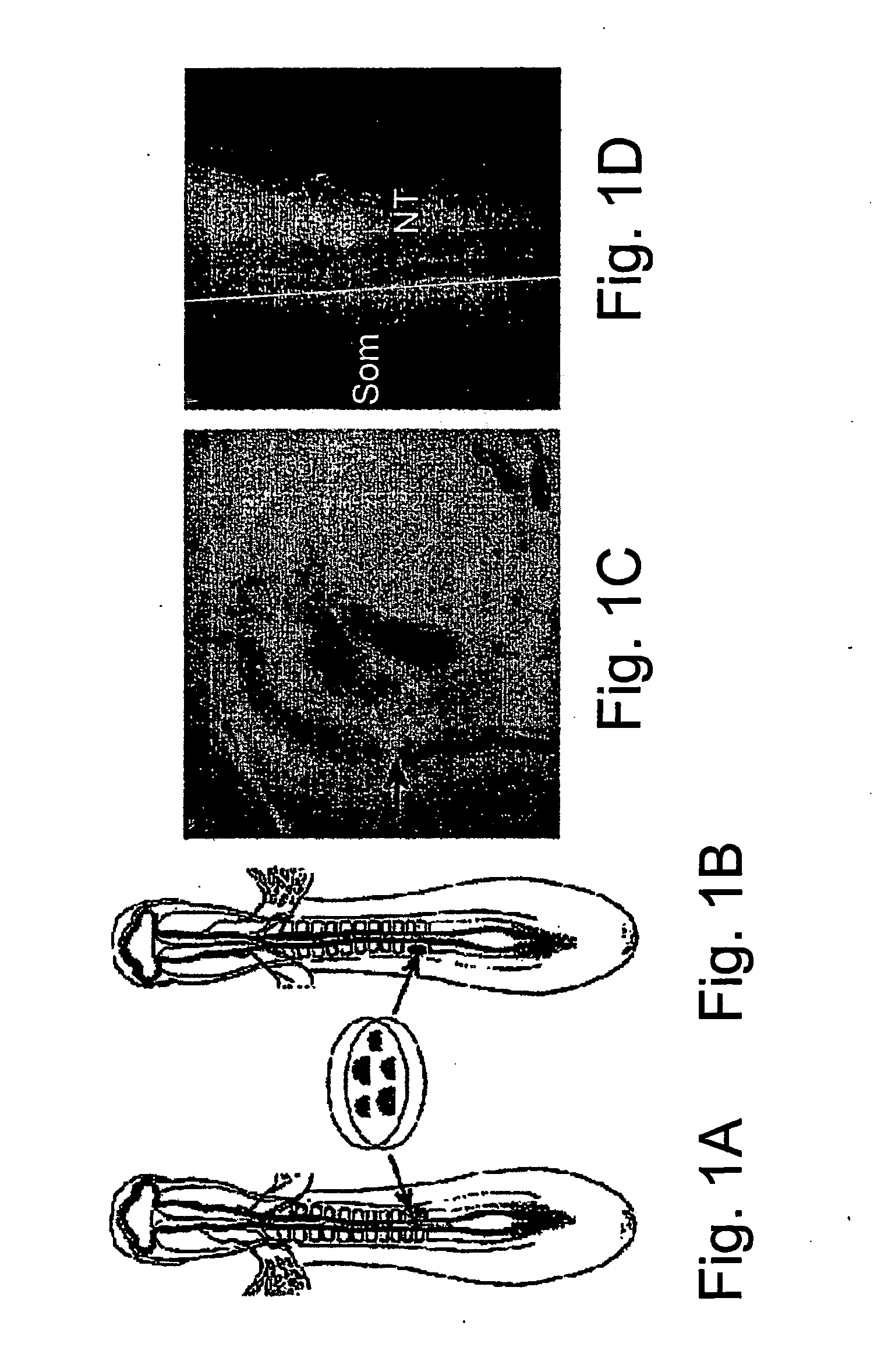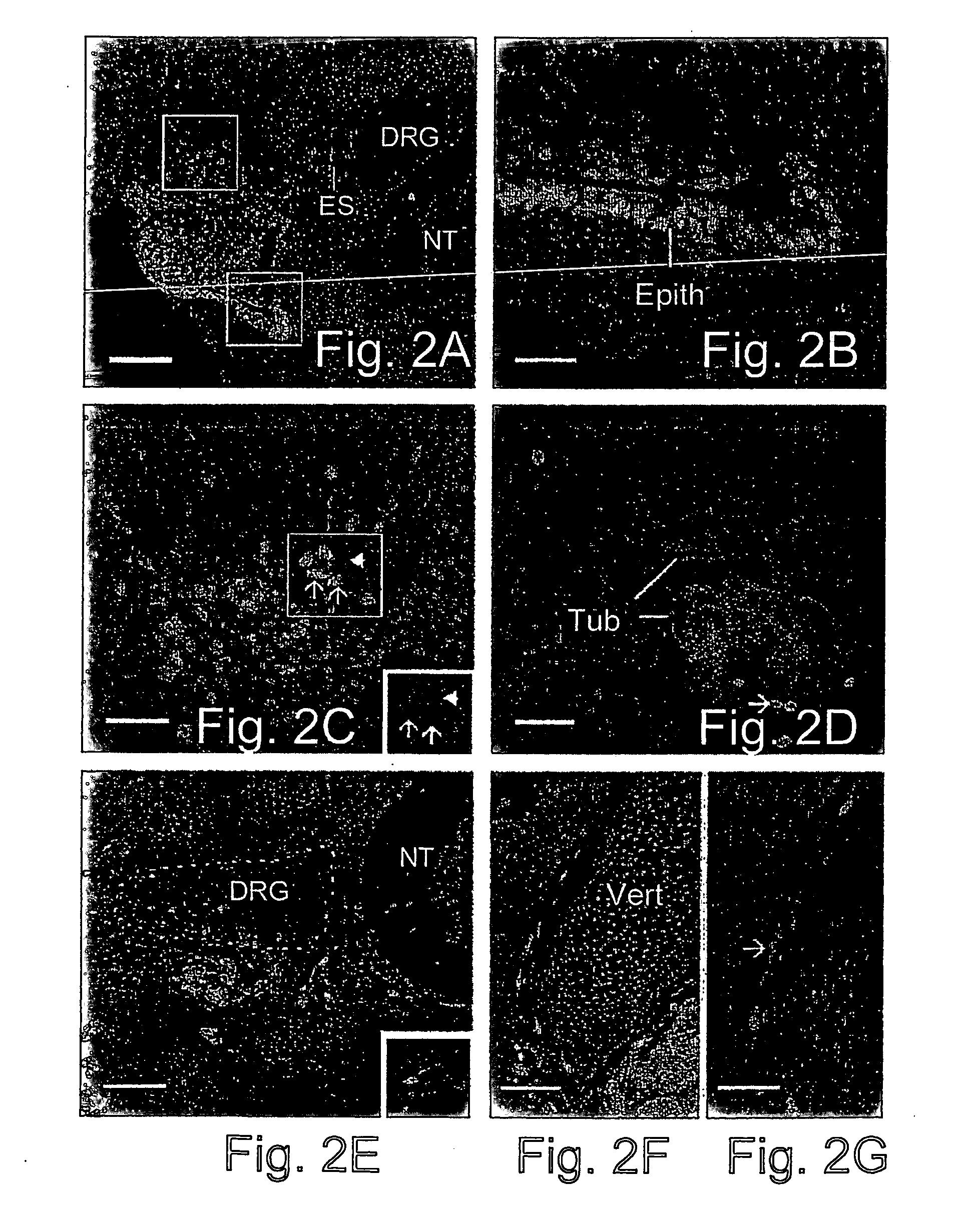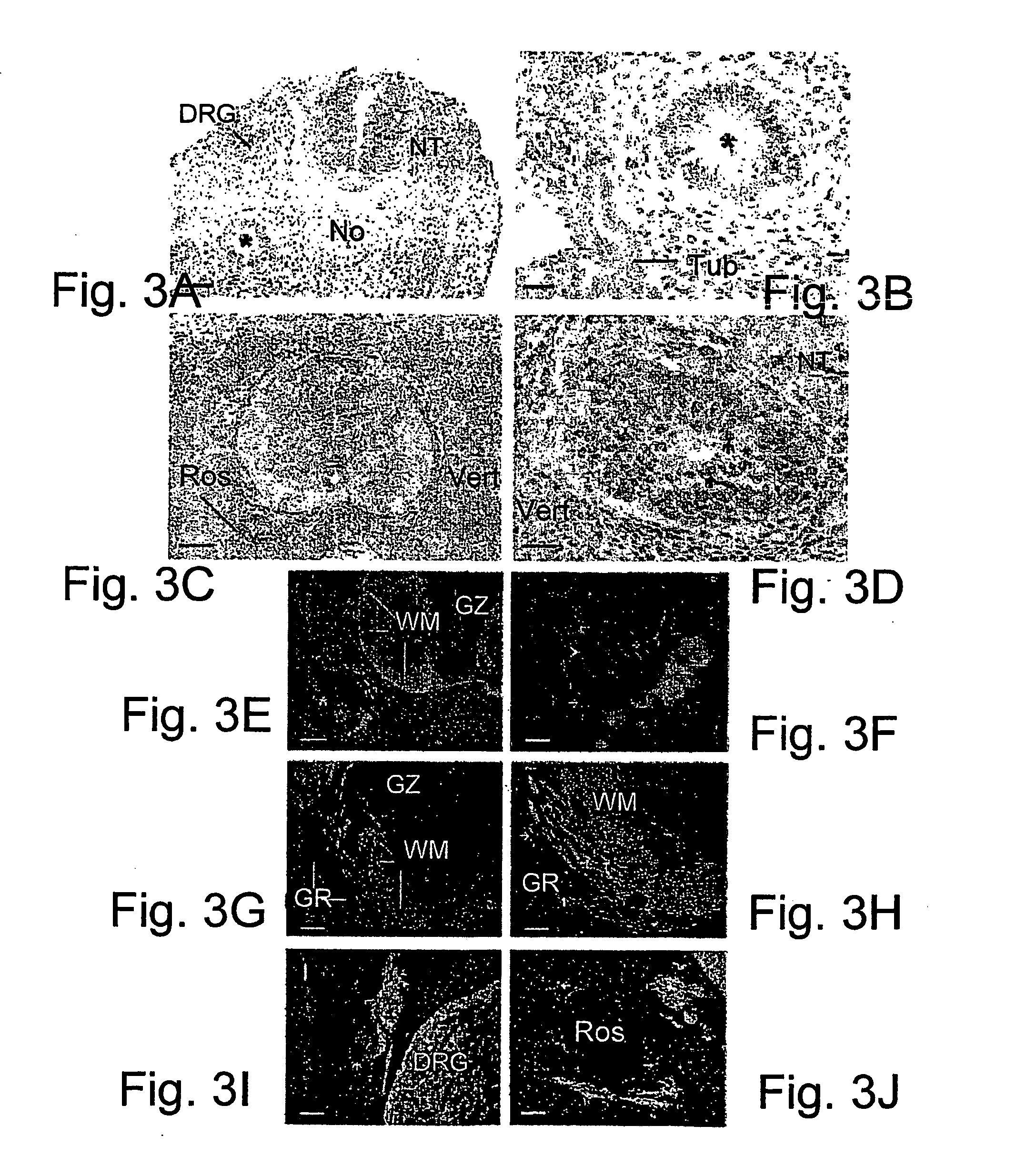Differentiation of human embryonic stem cells in avian embryos
a technology of embryonic stem cells and embryos, which is applied in the field of differentiation of human embryonic stem cells in avian embryos, can solve the problems of human cell types not yet produced, limitations of in vitro approaches,
- Summary
- Abstract
- Description
- Claims
- Application Information
AI Technical Summary
Benefits of technology
Problems solved by technology
Method used
Image
Examples
example 1
Human ES Cells Transplanted into Somitic Mesoderm Integrates into Chick Tissues
[0123] Colonies of human ES cells were micro-surgically grafted into the trunk region of 1.5 or 2 day-old (E1.5-E2) chick embryos (FIGS. 1A and 1B). One day after surgery the operation site was always visible. When GFP-expressing cells (Eiges et al. 2001) were implanted, they were clearly visible in the living embryo using fluorescence illumination (FIGS. 1C and 1D). The cells remained mostly as clumps, although individual cells could sometimes be observed migrating away from the site of implantation (not shown). The graft could be observed by fluorescence microscopy in some cases as long as four or five days post-surgery, after fixation and removal of overlying tissues (not shown).
[0124] The somites give rise to multiple tissue types, including muscle, dermis and cartilage / bone. In addition, neural crest cells forming peripheral ganglia migrate through the somites after their epithelial / mesenchymal tr...
example 2
Neuronal Differentiation of Human ES Cells Replacing Somitic Mesoderm
[0126] When colonies of human ES cells were implanted adjacent to the neural tube and notocord without intervening somitic mesoderm, epithelia reminiscent of neural rosettes were always (7 of 7 embryos analyzed) observed latero-ventral to the chick spinal cord (FIGS. 3A-3F). At embryonic days 6-7 these structures contained numerous mitotic figures that were localized primarily to their lumenal aspect (FIG. 3D). This arrangement of a stratified (or pseudo-stratified) epithelium with mitotic figures adlumenal and not basal, is characteristic of neural rosettes in human teratomas (Caccamo et al., 1989) and in the early vertebrate neural tube (see below). The neural rosette-like structures contained nuclei that were much larger than those of the host chick cells (FIGS. 3A-D).
[0127] Compared to human ES cells transplanted into damaged somites, this series of grafts contained many fewer individual cells that migrated ...
PUM
| Property | Measurement | Unit |
|---|---|---|
| Time | aaaaa | aaaaa |
| Time | aaaaa | aaaaa |
| Time | aaaaa | aaaaa |
Abstract
Description
Claims
Application Information
 Login to View More
Login to View More - R&D
- Intellectual Property
- Life Sciences
- Materials
- Tech Scout
- Unparalleled Data Quality
- Higher Quality Content
- 60% Fewer Hallucinations
Browse by: Latest US Patents, China's latest patents, Technical Efficacy Thesaurus, Application Domain, Technology Topic, Popular Technical Reports.
© 2025 PatSnap. All rights reserved.Legal|Privacy policy|Modern Slavery Act Transparency Statement|Sitemap|About US| Contact US: help@patsnap.com



